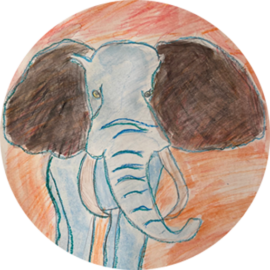Steady On Target
One of my favourite movie scenes: Luke Skywalker is piloting his X-wing through a narrow corridor in the hull of the death star. He knows he has to do the impossible; escape the stormtroopers that are in hot pursuit and deliver a missile into an insanely small vent shaft.
He knows this, but he’s starting to doubt it’s possible. At the edge of panic he shouts to his co-pilot, who in hist last seconds left to live calmly answers: “stay on target”.
Luke takes a deep breath, switches off his targeting computer, and gets down to business.
I used to have a printed screen grab of that scene tacked to the edge of my monitor. It was comforting in moments when executing on even the best of strategies, felt like being on a a suicide mission.
I thought about that the other day when I heard an elite downhill skier talk in front of a bunch of product managers. Johan Hagberg looks to be fresh out of high school but speaks with the authority of a veteran. He says there are four components in training to become world class. You need to build strength, improve your technique, understand your “line” and work on your mental attitude.
Line is the term skiers use to describe the optimal route down a slope. For our purposes it can be thought of as the equivalence to a product strategy.
Johan says strength, skills and strategy are important, but attitude is what makes the biggest difference:
“It’s a matter of developing your ability to be comfortable in uncomfortable situations, so that you can keep up the nerve to stick to your line”
I find that very eloquent.
A professional downhill skier can reach speeds of 160 kilometers per hour. At speeds like that I imagine you’re mostly operating on autopilot, there can’t be much time to think. In fact, you probably want to keep all thoughts from being thought during a ride like that. I guess that’s the state athletes refer to as being “in the zone”. I’d say it must be a pretty fantastic feeling.
But here’s the thing: getting into the zone doesn’t just happen by itself. It takes training and dedication, and if we’re talking about a team sports such as product development it also takes a deep trust between team members. (I guess that’s one of the reasons that people who join high performing organisations like Apple tend to stay there; the type of trust required to build world class products takes time to create and once it’s there it becomes a precious commodity, not just to the company, but just as much to the team members themselves).
So what would happen if we were to take a cue from someone like Johan and start practicing “being comfortable in uncomfortable situations”? I think it would serve us well. All stripes of entrepreneurship and product management brings a certain type of tension that need to be embraced. Our job, in the words of Apple veteran Ron Lichty — author of Managing the Unmanageable — is to “transform chaos into clarity”.
In order to do that we need to embrace the fact that we’ll always juggle contradictory demands from too many stakeholders. Just like with elite downhill skiing it’s not a job for the weak-of-heart, but with the right mindset it can be equally exhilarating.
